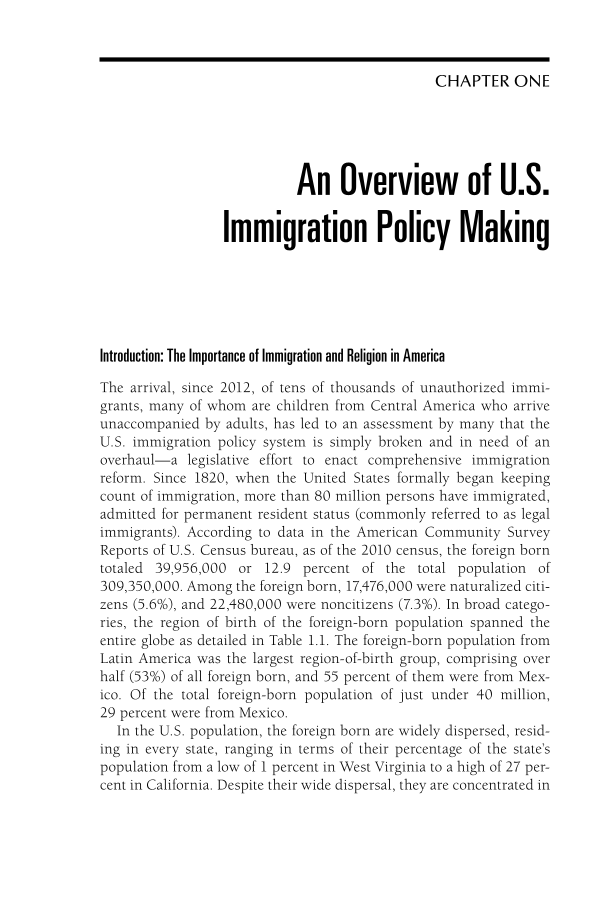CHAPTER ONE An Overview of U.S. Immigration Policy Making Introduction: The Importance of Immigration and Religion in America The arrival, since 2012, of tens of thousands of unauthorized immi- grants, many of whom are children from Central America who arrive unaccompanied by adults, has led to an assessment by many that the U.S. immigration policy system is simply broken and in need of an overhaul—a legislative effort to enact comprehensive immigration reform. Since 1820, when the United States formally began keeping count of immigration, more than 80 million persons have immigrated, admitted for permanent resident status (commonly referred to as legal immigrants). According to data in the American Community Survey Reports of U.S. Census bureau, as of the 2010 census, the foreign born totaled 39,956,000 or 12.9 percent of the total population of 309,350,000. Among the foreign born, 17,476,000 were naturalized citi- zens (5.6%), and 22,480,000 were noncitizens (7.3%). In broad catego- ries, the region of birth of the foreign-born population spanned the entire globe as detailed in Table 1.1. The foreign-born population from Latin America was the largest region-of-birth group, comprising over half (53%) of all foreign born, and 55 percent of them were from Mex- ico. Of the total foreign-born population of just under 40 million, 29 percent were from Mexico. In the U.S. population, the foreign born are widely dispersed, resid- ing in every state, ranging in terms of their percentage of the state’s population from a low of 1 percent in West Virginia to a high of 27 per- cent in California. Despite their wide dispersal, they are concentrated in
Document Details My Account Print multiple pages
Print
You have printed 0 times in the last 24 hours.
Your print count will reset on at .
You may print 0 more time(s) before then.
You may print a maximum of 0 pages at a time.




































































































































































































































































































































